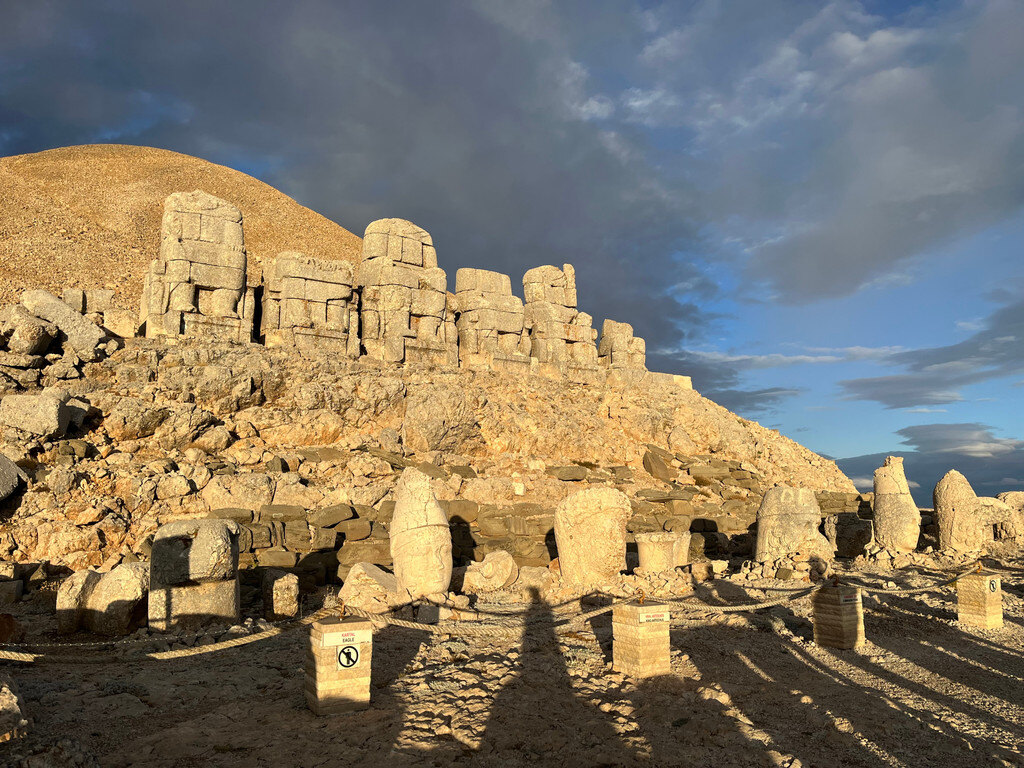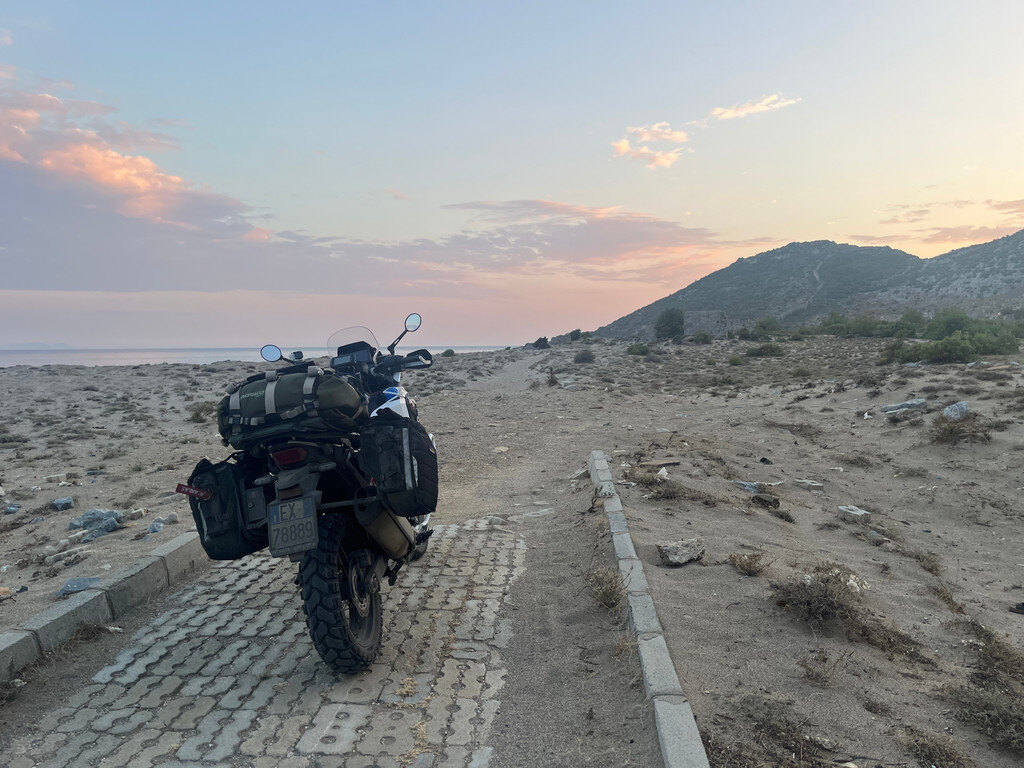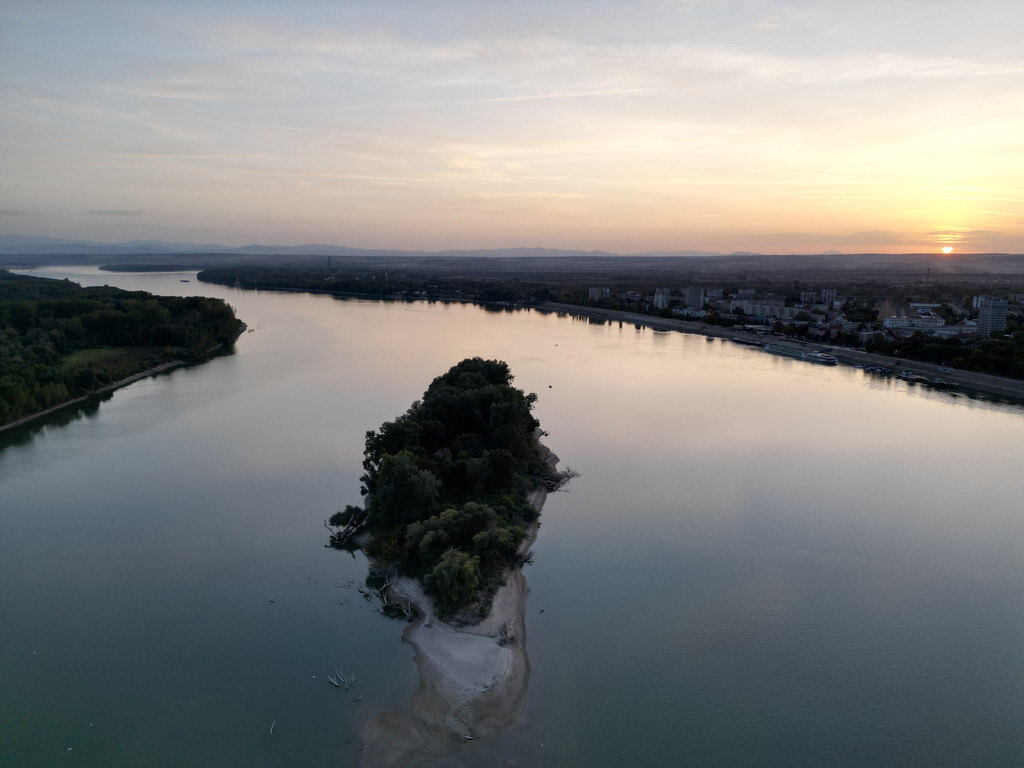
Luca Tonelli, born in 1987, long-time traveler. Even before getting my license, I discovered 4x4 vehicles, a passion that gave me the chance to visit deserts and climb mountains in various continents, ranging from the Americas to Australia via Africa and a brief period in Russia. Such deep-rooted passion for four-wheel drive vehicles branched out into an interest for two-wheel vehicles, which I tried out at the urging of a friend. At first I rode sports motorcycles, wearing out tires on the Apennines – then I combined my lone traveler soul with off-road stretches into a mix that’s never dull.
You can find the first part of my journey to Turkey here: A motorcycle marathon to the East: my motorcycle journey from Italy to Turkey
I rode from Italy to Turkey on my moody Honda Africa Twin 1100. It’s a solo journey, so I can follow my own rhythm and go where I please, wandering off on impromptu detours without having to answer to anyone. I crossed the Balkans and then the entire Anatolian peninsula to come here: Now I’ll travel through the renowned and impressive Dark Canyon, close to Kemaliye.
In the morning, I deal with the umpteenth strop thrown by the Africa, as well as by the weather, and I’m off. The next kilometers will take me over the Kemaliye Tas Yolu, Kemaliye’s rocky road, whose construction started in 1870 and ended in 2002.
Ranked as one of the most dangerous roads in the world, it looks like a slender white snake overlooking the Euphrates, the longest river in Western Asia, lying quietly at the bottom of the canyon it slowly and persistently carved to a depth of 600 m into the hard Antalyian rock. It’s the most adventurous alternative to a well-kept asphalt mountain road – fewer kilometers, sure, but it’d take about the same time to reach Kemaliye.
There are 38 unlit tunnels, though the holes in the wall on the river side (presumably made to dispose of waste material during construction), provide enough light and air to prevent claustrophobia. To be honest, the surface is good, the road at times is very narrow but more than wide enough for a loaded motorcycle. Of course, I wouldn’t like to be in a car and cross another vehicle, but it’s perfectly doable, as long as you’re not too afraid of heights.
The next destination in this Turkish itinerary is one of those sites out of a history book with pictures of busts beheaded by millennia and earthquakes, pictures that, as a child, you hoped were going to be as large as possible so that there would be less text to read. At the time I wasn’t impressed because I couldn’t see why they were different from the other thousands of old rocks I’d already seen, yet I’ve recently been entranced by some of those images, presumably taken at dawn. I had to see it in person at all costs, so I booked a single room on otelz.com (less sophisticated than the well-known platform with the blue badge, but the latter doesn’t work in Turkey), in the last human outpost at the feet of the mount when coming from the north, the less touristy side.
I ride along the last kilometers of dirt road that leads up there, climbing alone for hours, wandering through lands inhabited by tough and humble mountain people and mammals that are threats to the herds, until, at sunset, I’m up the 2,150 meters of Nemrut, the tallest mount in Mesopotamia. The six statues commissioned by king Antiochus I of Commagene over 2,000 years ago stand erect in front of a pile of rubble, his sanctuary-grave. Seen in their orographic surroundings, they’re really impressive: The heads alone, arranged on the ground in front of their respective busts by archeologists, are over two meters large, including the headpiece.
I return there at dawn, the air is crisp, the cold wind bites me and briskly wakes me up in the early morning, but then the warm rays of the sun caress me, shining on this pompously grand masterwork. A frugal breakfast (always strictly savory, with the ever-present cheeses and tomatoes) and then on, toward civilization.

Or perhaps not. The motorcycle seems to have a different opinion: It struggles to start, it starts up and then turns off a few seconds later, and attempt after attempt the battery is getting weaker. I start swearing inside my helmet, the visor begins fogging up at the Pinlock’s sides, I’m trying to think when was the last time the Apple Car Play’s display showed some phone coverage when, after a last half-hearted effort, the motorcycle starts up and this time the engine stays on. Crisis averted.
I descend, riding “on eggs”: In Turkey, paving is restored in a funny way, by copiously spreading some wonderful small pebbles over the asphalt, creating a layer that’s neither soft enough to be considered proper dirt nor firm enough to be regarded as asphalt. A stop at the Kahta Castle, where the descent toward Adıyaman begins. Thankfully I’m not in a hurry, today’s schedule only entails the half day needed to reach Şanlıurfa. It’s a stop I sneakily added to the itinerary, I’ll have to make up time on the way back but it meets – even surpasses – my already high expectations, built on some research and tales I heard.
There are no words that could convey on paper the emotions you feel when you really find yourself on the verge of the true, intense East: For the first time, it feels like you’re peeping into a huge hall from a half-open door, and you know you’ll have to go further. But not yet, not this time, I have to go home, work is a necessary evil.
I confine myself to contemplating the magnificence of the Pool of Abraham with its sacred carp, I stroll through the great yard of the Ottoman mosque, I lose myself in the colorful bazaar, I climb up to the fortress that towers over the city dominated, over the centuries, by the Sumerian, Babylonian, Assyrian, Persian, Roman, Byzantine and Arabian civilizations, sipping some cay before turning off the light and the mind, lulled by dreams of the infinite.
On the thirteenth day of the journey I set the wheels from 21” toward west for the first time: I turned around, now it’s time to go back home. The awful weather and an upset stomach have me traveling directly to the destination, the second longest transfer ride since departure, after having tried (in vain) to pay for the second speeding ticket I got after Istanbul. I spend the night in Anamur, the first seaside resort on the Mediterranean Sea, with the aim of visiting the Anemurium site. A missed chance, due to my arrival time after almost 700 km: The site closes relatively early so I make do by flying the drone over it.
The day after, in Alanya, I collect my second speeding ticket, this time in a heavily trafficked center. I contemplate the ticket and I contemplate the castle, perched on the cliff that goes down to the port, and I try to get used to such a “Western” atmosphere when only a few hours ago I was immersed, body and mind, in decidedly more easterly surroundings.
Riding along the coast on fast roads, with accommodation facilities specifically tailored to Russian tourists often concealing the sea, I realize that the coastal stretch that’s probably really interesting is the one close to the Aegean Sea, I could have easily avoided this part. So, I decide to combine two destinations by taking advantage of the good road network, and I head to Ölüdeniz. I descend toward this resort town at sunset, with a dodgy rear wheel that, the following morning, I’ll find flat.

So, no swim and I go back along the coast with a view of the sea, up to the Kekova sunken archeological site, which deserves a boat trip (even better on a canoe), to get closer to these spectacular ruins swallowed up by the sea.
The following morning I load the side bags again and ride to the Kaunos archeological site, off the tourist trail but much more interesting, overlooking the scenic swampy lowlands that probably still jealously guard some other ancient treasure. After lunch, I head straight toward the Datça Peninsula and the Knidos site, making short work of the winding D400’s bends, probably the only Turkish road on which you can dare to speed, as the surface is roughly similar to European standards. Knidos, which used to be a Greek city trading with Anatolia, is magical at sunset, with sailboats anchored in its two bays while the sun disappears over the horizon.
In these off-season evenings, roads and sites quickly empty out, leaving in the air a lingering smell of warm asphalt and that of a few mopeds burning more oil than gas. The sun blinds me from the mirrors, and my shadow dances on the tarmac, always ahead of me bend after bend, amid rocks and guardrails, getting increasingly longer until it blends in with the darkness sliding down the hills and swallowing it as I reach my safe haven. I left behind a shy glow artfully taken over by an even shyer moon that will look after me until dusk, when I’ll be finally in bed after a dinner in one of the many restaurants on the beach.
I get up early because I only have 20 minutes to reach the port, on the other side of the peninsula: As it’s off-season, the ferries shuttling to and from Bodrum will save you over 200 km, but they’re only at 9 a.m. or 12 p.m. At the gate, the ticket number jotted down on the hotel’s headed paper by the nice receptionist is enough to satisfy the port authorities, and I go on board to enjoy a relaxing crossing with the sun kissing my increasingly smoother forehead.
Once off the ferry, I quickly sneak out from chaotic Bodrum and head toward the Temple of Apollo in Dydima, stopping for lunch at a bar with a small balcony that overlooks the site, slightly sunken yet majestic – after all, the god of time was considerably significant to the Ancient Greeks.
Immediately after, it’s the turn of Ephesus. I bitterly regret it, as it’s a hellish bedlam of rude tourists whose attention-seeking behavior is utterly lamentable; then again, it was on the way and a stop was overdue. It was likely the totally wrong time to be there, also because looking at the position of the sun, the light would have been better in the morning. In the evening, I reach the small walled town of Foça, a small Mediterranean-style gem, worthy of note and absolutely recommended to bid a last farewell to the sea – meant in terms of a touristy and carefree destination.
The day after is just a transfer ride, spiced up with a visit to the two sites in Pergamon (Bergama). At first, taking advantage of the time, I enjoyed Asklepion by myself: A healing center really worthy of note, with a Roman theater and a library; then I climbed (in the truest sense of the word, considering how steep it was) toward the Acropolis, dominated by the temple of Zeus and Athena. I’m back on the European continent via the brand-new bridge around Canakkale, my foray into Turkey is basically finished, and I’m in Edirne, a few kilometers from the Bulgarian border.
Bulgaria really is a country of great contrasts: Cities like Ruse, with a European atmosphere as we know it in terms of history and appearance, and really poor rural areas, with dilapidated roads and much more extreme life conditions than what I saw on my way over. I cross slightly desolate vast areas, colonized by major Northern-European style agricultural businesses, and at some point I’m funneled through a long compulsory detour route with heavy vehicles. The secondary network is not suited to support such loads and the water mains subside, making the condition of the surface under the asphalt even more critical than what they originally were. Heavy vehicles stop, unsure whether to go on or not, and if you’re on a motorcycle your only choice is to cross dark pools, with no idea whether they’re hiding a chasm or are just puddles.
Once more, the Danube clear my thoughts away as I rest on its shores, a little apprehensive to leave the motorcycle parked outdoors in a frontier city (Vidin) that perfectly looks its part. I then cross Serbia without any issues (apart from the phone bills). In the morning, I leave Bulgaria (“Where are you going, Italian?”) to then ride along a winding road on the border with Romania, along the Sava river.

I see a castle, and furthermore on the river. I’m irresistibly attracted by the combined view, and it’s the right choice because it’s really spectacular and the asphalt is more than adequate, despite the roads being wet from the incessant rain that kept on falling the whole morning. On site, signs in the right color warn me of a danger I’d honestly never would have considered: Venomous snakes. Best pay attention.
Croatia welcomes me with the town of Slavonski Brod, on the Sava river, and its polygonal Habsburgs fortress surrounded by water; I almost feel at home now, less than 24 hours and this journey, too, will come to an end.
The final departure is shrouded in fog but soon the sun peeps out and the temperature becomes decidedly nicer than the previous day. Verdant Slovenia, with a touch of foliage, before my stop in Trieste and the last stretch toward home, which I reach after 21 days and 9,009 km, as planned.